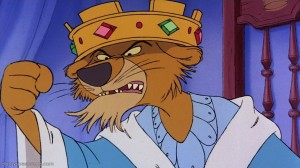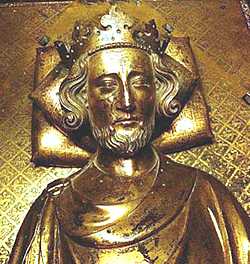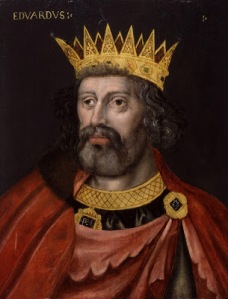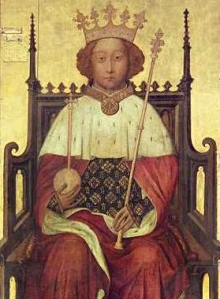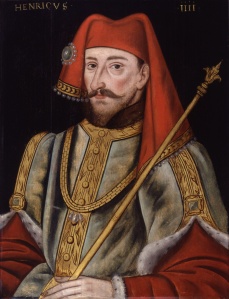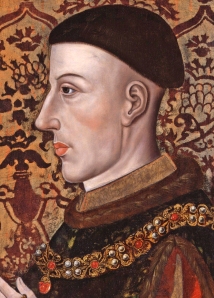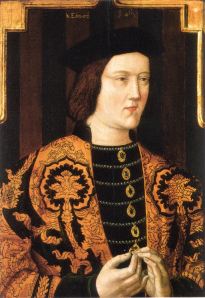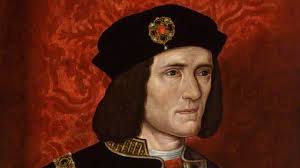Part one: The Plantagenets
Between 1154 and 1603 17 monarchs ruled England (not including Lady Jane Grey’s 9 day reign). Of course one cannot simply summarise any of these monarchs as just ‘good’ or ‘bad’ but for the sake of this article I am going to go by their most widely acknowledged reputations as simply ‘good’ or ‘bad’.
My theory is that a good king follows a bad king. It is a cycle and it’s hard to work out which comes first, the good king or the bad king, but it is my opinion that if your father was a good king, you can only disappoint. The bad king’s son then vows he will be a better king than his father. One gains land in France, the other loses it. The next one re-gains the land and then their son loses it all again, ad infinitum until England had no land left in France.
Let’s start with Henry II
Henry II ruled from 1154-1189 and is generally seen to have been a good king, bringing peace and prosperity to a country that had been torn apart by civil war.
His son Richard I’s reign was too short (1189-99) to see what kind of king he would have really turned out to be and he spent most of it crusading the middle east leaving the country in the hands of his brother John. However his crusading ‘victories’ have earned him the reputation as a good king, therefore an anomaly in the trend. However because his reign was short and he was succeeded by his brother who was also a son of Henry II, I don’t think he counts in this trend.
King John
One of history’s villains. He lost almost all of England’s land in France, bankrupted the people and possibly murdered his nephew, although this is not proved. King John can safely be summed up as mainly a bad king.
John’s son and heir Henry III succeeded the throne in 1216 at the age of just 9 years old.
For the first 10 years of his rule, his regent William Marshall, famed knight, helped him to run the country. This involved a lot of putting out the flames from his father’s reign, such as the Baron’s War. As King himself, Henry would have wanted to distance himself from his father’s reputation and he generally succeeded. However, anyone would look like a good king after King John. Towards the end of his reign Henry became increasingly pious and developed an obsession with Edward the Confessor. He spent much of the country’s money on reliquaries such as a supposed vial of Jesus’ blood, which he paraded around London barefoot on one St Edward’s day. All in all, he wasn’t overly a good or a bad king. He just held down the fort, so to speak, for his son.
Edward I
Named after his father’s favourite saint, Edward I was the first in a trilogy of Edwards. Nicknamed Longshanks because of his incredible height, Edward I was a striking king. He is perhaps most famous for his slaughter of the Welsh people over many gruesome battles in order to claim Wales and unite it as part of his Kingdom. Generally he is seen as a good king because glory in war = good. Also expanding English territory = good (if you’re English). However, if you are Welsh, Edward is seen less as a war hero and more of an oppressor.
Edward II
Edward II is infamous for being ineffectual and a definite bad king. From the start he annoyed and alienated the nobles by having his ‘favourite’ Piers Gaveston showered with titles and positions in his court that were above his station. It was harmless but the nobles were jealous and killed Gaveston, disguising it as a trial. Edward then moved on to the Despensers who were less harmless. They were running the country through Edward. He was such a bad king that his own wife set in motion the plan to depose him in favour of their son.
Edward III
Edward III is arguably one of the greatest Plantagenet kings, rivalled only by Henry V. His military victories at Crécy and Poitiers brought him glory that sustained him throughout his long reign (1327-1377). He invented the Order of the Garter, inspired by the chivalric Knights of the Round Table. Edward was infatuated by all things Arthur, seeing as at the time they did not realise he was fictional. He was perhaps the most Arthurian king England has seen. Definite good king.
Richard II
Edward III’s son, Edward the Black Prince, died before he could take his father’s place. Therefore the rules of primogeniture dictated that his son, Richard, should be the next king, instead of Edward III’s next living son, John of Gaunt. Richard was a bad king. He was 10 when he was crowned and his minority saw times of much social upheaval during the Peasants’ Revolt of 1381. When he reached his majority he began wielding his power, calling for the arrest and execution of 3 of his nobles: Gloucester, Warwick and Arundel. Meanwhile his cousin, John of Gaunt’s son, was planning his invasion.
Henry IV
Henry withstood his fair share of rebellions, but mainly his reign was ‘meh’. He was a ‘meh’ king. Even Shakespeare’s Henry IV was mainly about his son. So we can discount him from this pattern.
Henry V
Everybody knows about Henry V and his Agincourt victory. I think we can safely label him as a good king.
Henry VI
See my previous post. Bad King.
Edward IV
When he wasn’t busy defending his throne from the remaining Lancaster faction, and once his reign was established, Edward was generally seen as a good king, bringing relative peace after years of civil war. And despite what his portrait might suggest, he was incredibly good looking (and 6 foot 4!)
Richard III
Poor Edward V didn’t get a chance to see what kind of King he might have been because he and his brother disappeared from the Tower where they were being held before his coronation. The cause of this disappearance has been the subject of much debate ever since. It is generally accepted that they were murdered but the question is who ordered the murder. Richard definitely had something to gain from their deaths but so did the Tudors. However, even if he didn’t kill them, Richard took the throne from the boys he swore he would protect. Bad King.
This concludes Part One. Watch this space for Part Two: The Tudors…


